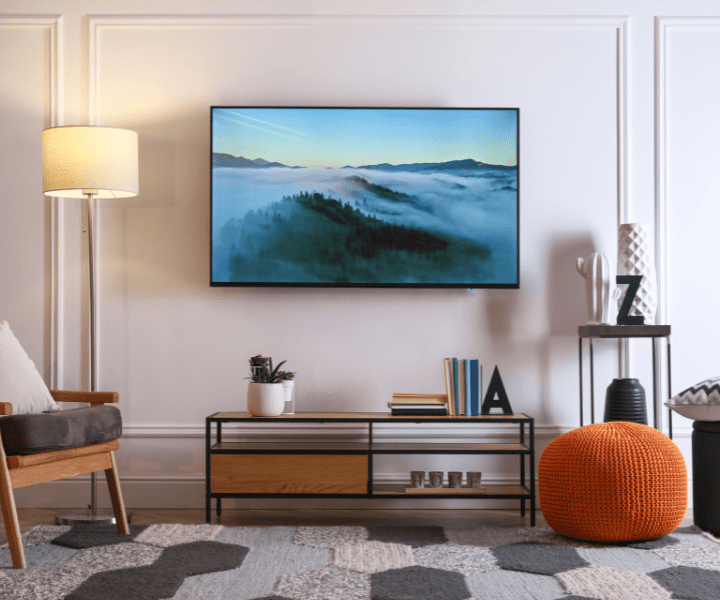Choosing the right TV Bracket For You

There are many different types of TV wall brackets available to mount your TV on the wall and give you the perfect viewing angle. Flat/Fixed TV brackets keep the TV in a fixed position and mounted flush against the wall. They’re cost-effective and offer a sleek, low-profile appearance, but no movement. Tilting TV brackets allow TVs to tilt up or down by 20 degrees. This type of bracket is perfect for mounting TVs higher up a wall - for example above a fireplace, where the TV will need tilting to create a better viewing angle. Full-motion TV brackets, AKA articulating wall brackets have an arm that allows the TV to be pulled out from the wall and moved in almost any direction. These brackets offer the most flexibility and are great for rooms with multiple viewing positions. Yes, you can put a TV bracket on a plasterboard wall. However, there are a few things you need to consider before doing so. The plasterboard isn’t strong enough to support the weight alone, so it’s key to locate the wooden studs, which will provide the necessary support needed. Choose a TV bracket that's suitable for your TV size and weight. Be aware that bracket types like full-motion will put more strain on the wall. It’s crucial to use the correct plasterboard anchors and fixing to ensure a sturdy mount. It’s important to fit a TV wall bracket properly to ensure the safety and stability of your TV, as well as to create the optimal viewing angle. There are a few steps to follow (most brackets should come with instructions): Choose the right location: Consider the angle, viewing positions, proximity to power sockets, viewing height and potential glare. Choose a bracket: Choose a bracket suitable for the location you’re mounting your TV and suitable for the size and weight of your TV. Get your tools: It is extremely important to have the correct equipment. You’ll need a drill, drill bits, a screwdriver, a stud finder, a pencil, a spirit level and the mounting bits that come with the mount. Check your walls: Locate your studs (if you’re mounting on plasterboard) and scan for electrics/ pipes to ensure you’re mounting in a safe location. Position the bracket: Hold the bracket (or template) up to the wall, using a spirit level and mark the drill holes. Drill: Drill pilot holes, insert your fixings and plugs and screw the bracket into place using a level to ensure it's straight as you fix it. Prepare the TV: Attach the provided mounting arms or plate to your TV following the instructions provided. Hang the TV and adjust: Hook the TV onto the bracket ensuring it’s securely in place. Then adjust the TV to your desired position, managing and organising cables as you go. TV brackets often fit a wide range of TV sizes and models, but this doesn’t necessarily mean that they’ll work with all TVs. The most important thing is a TVs compatibility with the VESA (Video Electronics Standards Association) mounting standard which determines the distance and location of the mounting holes on the TV. It’s important to check the bracket against these mounting holes. You will then need to consider TV weight and screen size to ensure the bracket you’re using is capable of holding the weight and size of your TV. It’s also important to consider the TV shape. Most universal brackets are made to fit flat-screen TVs not curved. So if you’re looking to mount a curved TV, you’ll need to check compatibility. Therefore, check your VESA fittings, your TV weight and size and the bracket compatibility before purchase. Selecting the right TV bracket for your needs involves a careful assessment of your viewing preferences and TVs spec. No matter what type of TV wall bracket you’re looking for, or whatever size TV you have, here at Blake UK, we have a comprehensive range of TV brackets and wall mounts.Flat TV Brackets
Tilting TV Brackets
Full Motion TV Brackets
Can You Put A TV Bracket On A Plasterboard Wall?
How To Fit A TV Wall Bracket?
Are TV Brackets Universal?
Conclusion








 Quick Add
Quick Add